On the sign:
The making of the Royal Arsenal
1805-1900
RAR logo
ROYAL ARSENAL RIVERSIDE
Royal Borough of Greenwich, London
The Napoleonic Wars (1803-1815) cemented Woolwich Arsenal’s importance to England’s military status. In 1805, King George III granted it the title ’Royal Arsenal’ and over the next 100 years, its reputation grew as a centre of engineering and armaments excellence.
The 19th century was a golden era of productivity, expansion and innovation for the Royal Arsenal. Vast new engineering buildings, including the Royal Carriage Factory, were built to accommodate thousands of skilled workers and the latest manufacturing invention, steam power. Brilliant engineers were employed here among them Marc Isambard Brunel (father of Isambard Kingdom Brunel) who introduced steam sawmills, and William Congreve, inventor of the Congreve Rocket.
Between 1805 and 1813, the Grand Stores, a complex of wharf-side warehouses with a central space used as a shot yard, were constructed. Many more buildings were added or extended. Improved ballistics technology meant that the existing gunnery range had to be doubled in size to 3,000 yards.
With the peace that followed the Battle of Waterloo (1815), activity at the Royal Arsenal declined, as did its technological leadership.
The workforce shrank from 5,000 to 500. It was only when Britain was faced with war again, this time in Crimea, that full production resumed. By 1857, the Arsenal had increased its capability with over 2,500 specialist machines powered by 68 steam engines. More new buildings were added. a Shot and Shell Foundry, a Chemical Laboratory for developing explosives, and a Gas Works.
A second revival of the Royal Arsenal’s fortunes followed in the late 19th century, with renewed investment in weaponry research and manufacture. The site expanded once more between 1892 and 1907 alone it more than doubled in area. It even had its own narrow-gauge railway and power station supplying electricity. By the turn of the century, the use of iron for gun manufacture had been replaced by steel - an omen, perhaps, of the conflict that would soon begin.
[Images]
Above: Extract from a 19th century map showing the expansion of buildings associated with the Carriage Department at Royal Arsenal
Left: The north west range at Royal Arsenal was buit between 1805 and 1810. Originally part of an ordnance factory and workshop, it was then used as an ammunition factory and later a sawmill and cooperage
Above: Henry Shrapnel developed the shell that bears his name at Royal Arsenal
[Timeline]
1512-1515
The creation of the Woolwich Dockyard
1600-1800
The most important armaments facility in England
1805-1900
The making of the Royal Arsenal
1914-1918
The Great War
1939-1994
The end of an era
2000-present
The birth of Royal Arsenal Riverside
Comments:
The Royal Arsenal area is located on the south bank of the Thames in the Woolwich area, an area that was used to make weapons, armor and more, mainly in the 18th and 19th centuries.
The main guard house at the Royal Arsenal was photographed on the same day by the same photographer
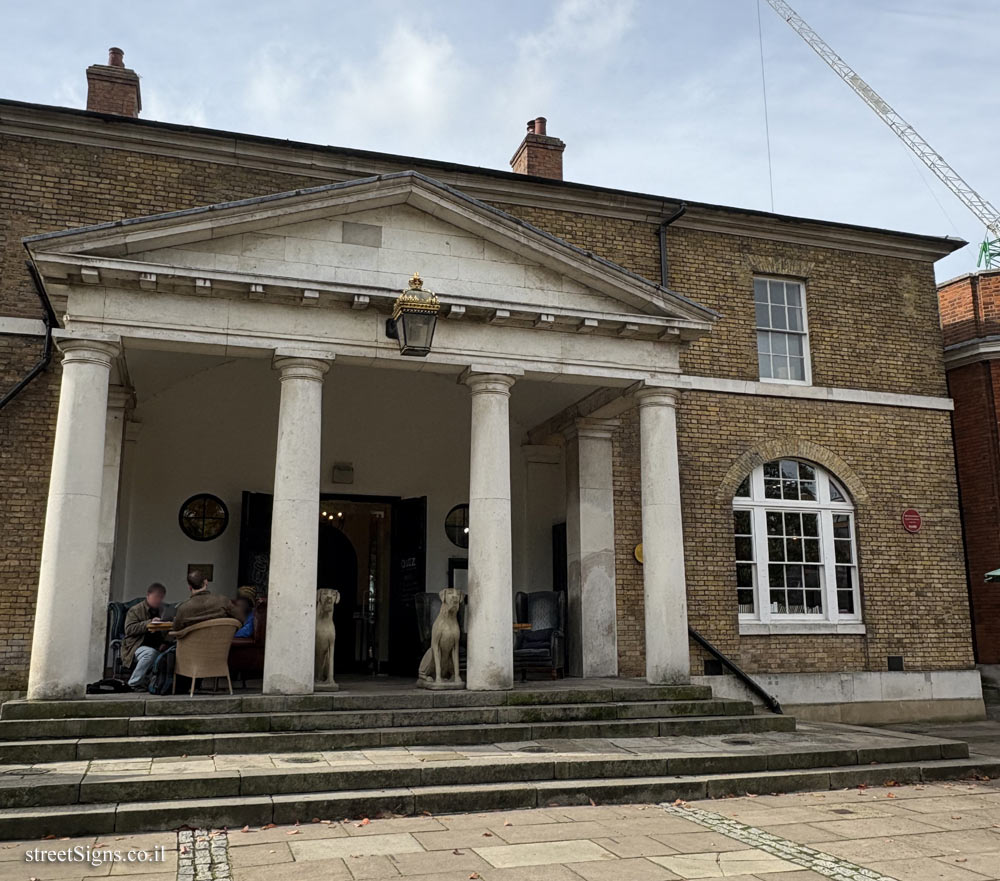 Click for a larger image
Click for a larger image The area where the sign is placed was photographed that day by the same photographer
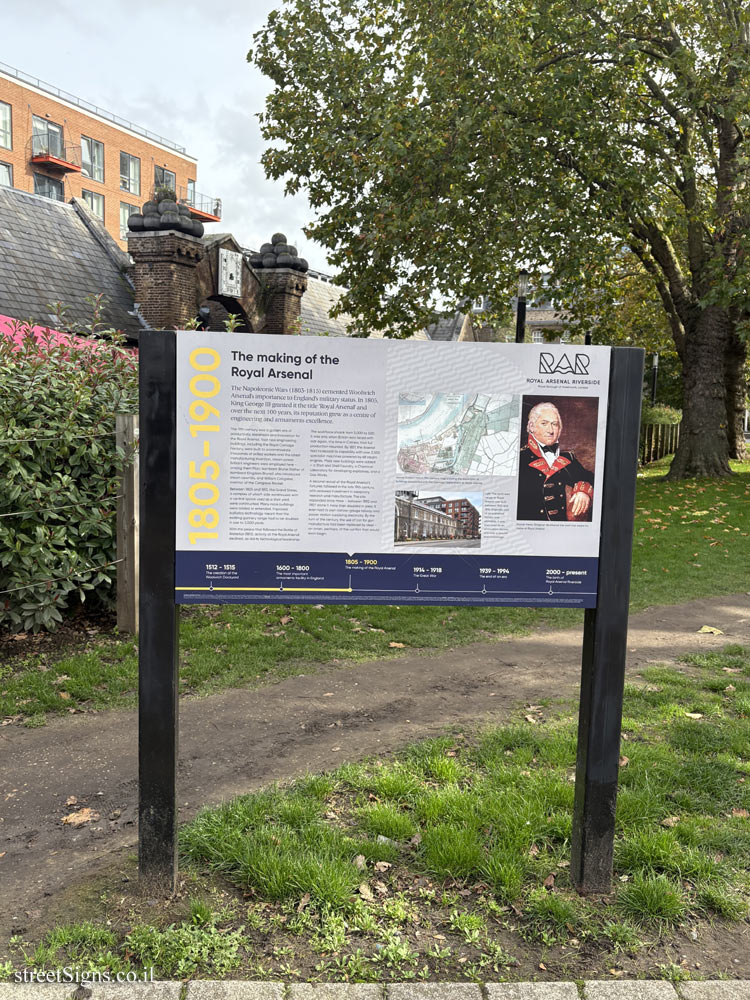 Click for a larger image
Click for a larger image The pictures that appear on the sign are shown here enlarged:
Map of the area -
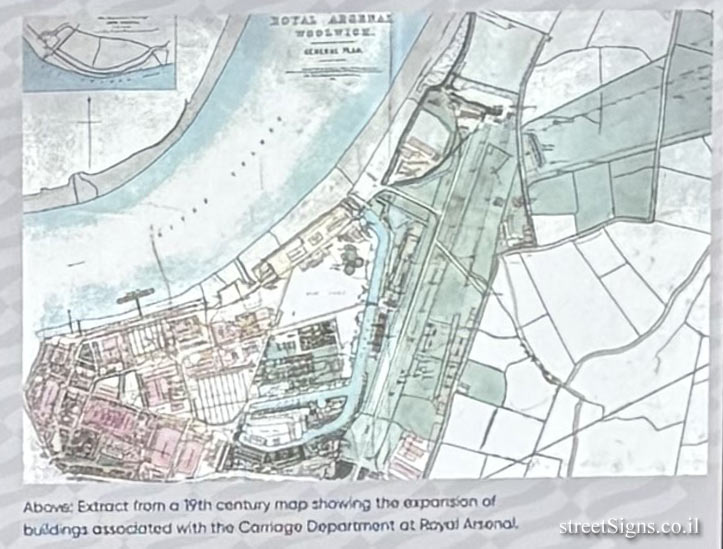 Click for a larger image
Click for a larger image The northwestern region -
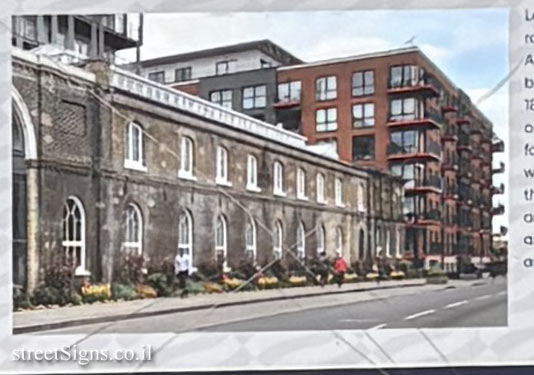 Click for a larger image
Click for a larger image Henry Shrapnel - Inventor of the shrapnel shell -
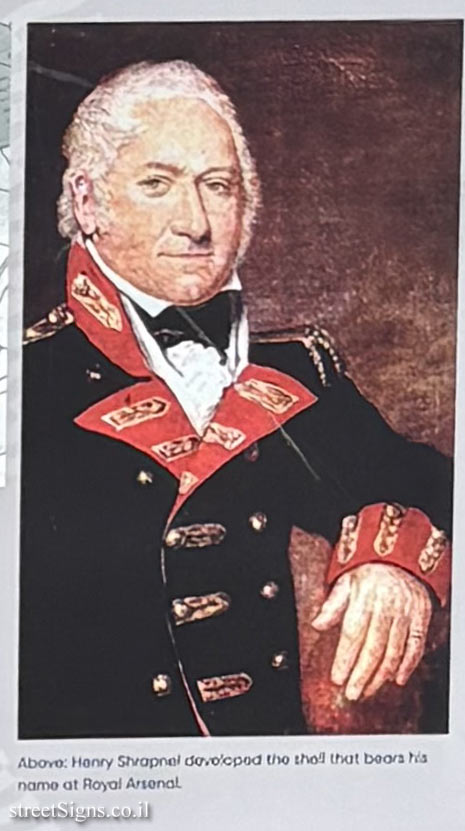 Click for a larger image
Click for a larger image
Learn about:

 Click for a larger image
Click for a larger image  Click for a larger image
Click for a larger image  Click for a larger image
Click for a larger image  Click for a larger image
Click for a larger image  Click for a larger image
Click for a larger image